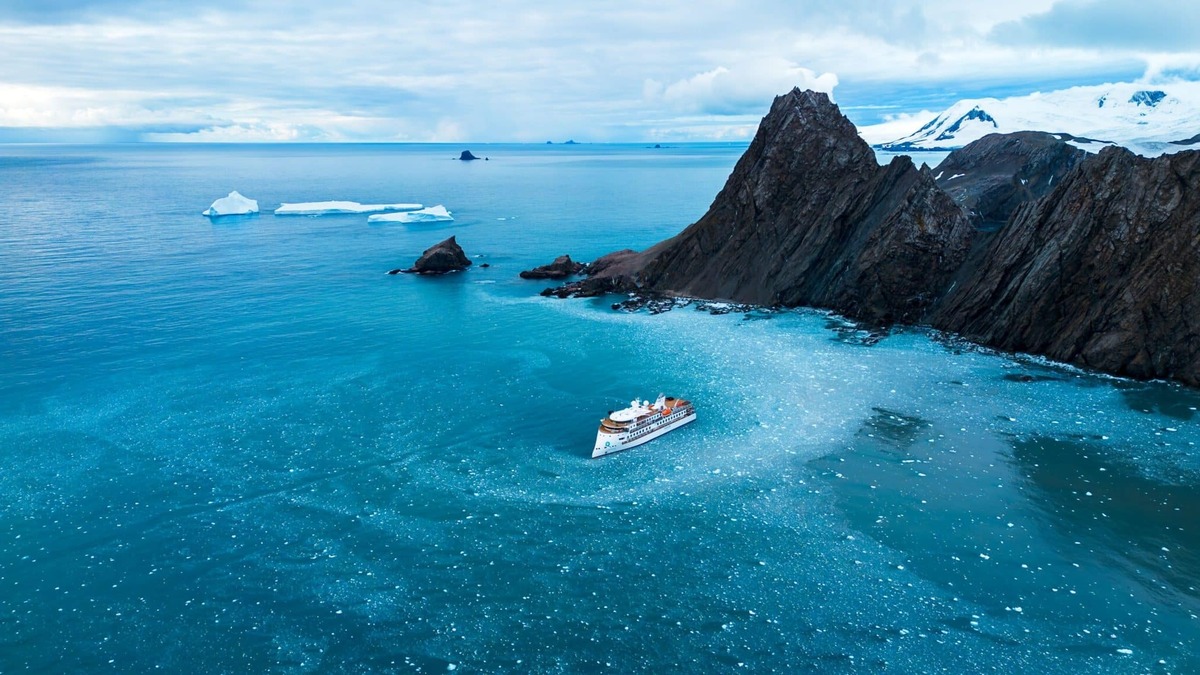
Ever wondered what secrets lie frozen in the icy expanse of Antarctica? This desolate, frostbitten continent at the bottom of our world is more than just a snowy wasteland. It's a place brimming with mysteries that scientists and adventurers alike are itching to unravel. From hidden mountains buried under miles of ice to ancient microbes that have lived isolated for millennia, Antarctica holds clues to our planet's past and future. OhMyFacts brings you closer to understanding this enigmatic land with 12 incredible facts that will chill and thrill you. Ready to slide into the unknown and uncover what makes Antarctica a marvel of our planet? Let's get cracking and reveal the icy secrets that await!
Key Takeaways:
- Antarctica is a frozen wonderland with 90% of the world's ice. If it melts, sea levels could rise by 60 meters! It's a vital place for penguins and scientific research.
- Antarctica is a mysterious land with hidden lakes and ancient landscapes. Climate change threatens its fragile environment, but conservation efforts aim to protect its pristine wilderness.
What Makes Antarctica So Unique?
Antarctica, Earth's southernmost continent, is a land shrouded in ice and mystery. Unlike any other place on our planet, it boasts features that make it stand out.
-
Antarctica is the coldest, windiest, and driest continent. Temperatures here can plummet to as low as -80 degrees Celsius (-112 degrees Fahrenheit), making it a harsh environment for life as we know it.
-
It's also home to about 90% of the world's ice volume, which translates to 70% of the planet's fresh water. If all of this ice were to melt, global sea levels would rise by about 60 meters (200 feet).
The Mysterious Creatures of Antarctica
Despite the extreme cold, life flourishes in Antarctica, adapting in remarkable ways.
-
The Antarctic Ocean teems with life, including krill, a small creature that forms the base of the food chain. It supports not only local wildlife but also species further afield, like whales.
-
Emperor Penguins are the only penguin species that breed during the Antarctic winter. They endure the brutal conditions, huddling together for warmth in what can only be described as a testament to survival.
Antarctica's Hidden Secrets Beneath the Ice
Beneath its icy exterior, Antarctica hides secrets that scientists are just beginning to uncover.
-
Subglacial lakes, such as Lake Vostok, lie miles beneath the ice sheet. These lakes have been isolated from the outside world for millions of years, potentially harboring life forms unknown to science.
-
Researchers have discovered mountains and canyons under the ice, some of which rival the Grand Canyon in size. These hidden landscapes tell a story of Earth's past climate changes.
The Impact of Climate Change on Antarctica
Climate change poses a significant threat to Antarctica, with effects that have global implications.
-
Ice shelves around the continent are thinning and breaking off due to warming ocean temperatures. This leads to increased ice flow from the continent into the ocean, contributing to sea-level rise.
-
Penguin populations are declining in some areas as their food sources, like krill, are affected by changing temperatures and ice conditions.
The Quest for Scientific Knowledge in Antarctica
Antarctica is not just a place of mystery and beauty; it's also a crucial location for scientific research.
-
The continent's extreme conditions make it an ideal natural laboratory for studies on climate change, astronomy, and even human endurance.
-
Ice cores drilled from the Antarctic ice sheet can reveal information about Earth's climate going back hundreds of thousands of years, offering insights into how climate has changed over time.
The Protection of Antarctica's Fragile Environment
Efforts are underway to protect the unique environment of Antarctica.
-
The Antarctic Treaty, signed in 1959, designates the continent as a natural reserve, devoted to peace and science. It bans military activity, mineral mining, and nuclear testing, among other things.
-
Conservation groups work tirelessly to address threats from climate change, illegal fishing, and tourism, aiming to preserve Antarctica's pristine wilderness for future generations.
Antarctica remains one of the most intriguing places on Earth, offering valuable lessons on resilience, adaptation, and the importance of preserving our planet's last unspoiled frontiers.
A Final Glance at Antarctica's Secrets
Antarctica, a land of extreme conditions and profound mysteries, never ceases to amaze. From its colossal ice shelves to the enigmatic creatures that call it home, every fact we've uncovered only adds layers to its intrigue. Venturing into the heart of this icy realm, we've explored hidden lakes beneath its surface, witnessed the resilience of life in the coldest place on Earth, and marveled at the tales of ancient meteorites holding secrets of the cosmos. This continent, remote and unforgiving, holds keys to understanding our planet's past, present, and future. As climate change continues to reshape its landscape, the importance of studying and preserving Antarctica has never been more evident. Let's keep our curiosity alive, for every discovery made on this icy frontier brings us closer to unlocking the mysteries of our world.
Frequently Asked Questions
Was this page helpful?
Our commitment to delivering trustworthy and engaging content is at the heart of what we do. Each fact on our site is contributed by real users like you, bringing a wealth of diverse insights and information. To ensure the highest standards of accuracy and reliability, our dedicated editors meticulously review each submission. This process guarantees that the facts we share are not only fascinating but also credible. Trust in our commitment to quality and authenticity as you explore and learn with us.


